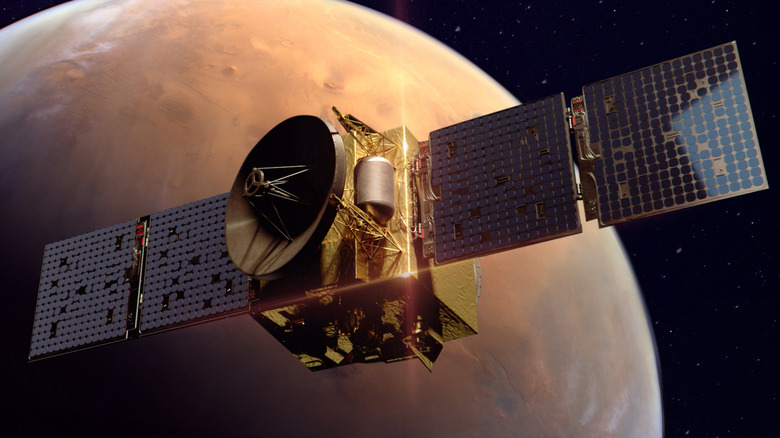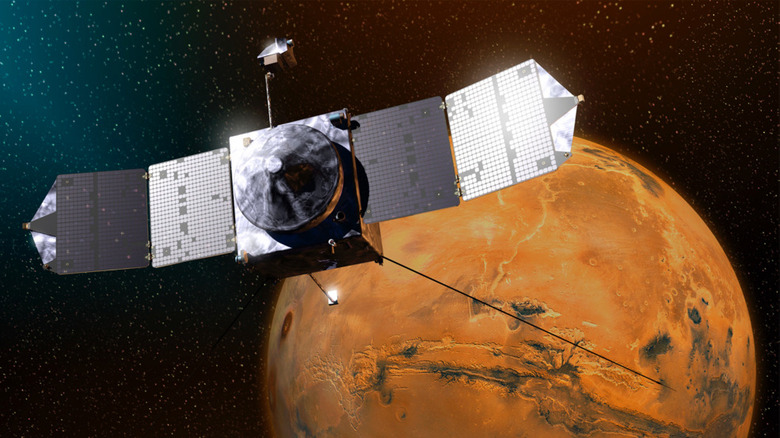NASA And UAE To Collaborate On Mars Missions - Why That's Important
When the United Arab Emirates (UAE) launched the Hope spacecraft in 2020, it became the first mission to Mars by an Arab nation, and it joined Mars missions by other countries including the U.S., Russia, China, and Europe. Now, two of those Mars orbiters will be teaming up to share data, thanks to an agreement to share findings between NASA's Mars Atmosphere and Volatile Evolution (MAVEN) orbiter and the Emirates Mars Mission's (EMM) Hope orbiter.
The Emirates Mars Mission launched the Hope orbiter to Mars in the summer of 2020. Hope arrived at the red planet in February 2021, and since then it has been gathering data on Mars' atmosphere and weather systems. Hope has an advantage in this because it sits in an extremely high orbit, between 12,000 miles and 27,000 miles from the surface, which lets it see large areas of the planet at once, according to Inverse.
This means Hope has been able to track large-scale weather events like a dust storm that rolled across the planet in January 2022, including passing over the Jezero crater where the NASA Perseverance rover and the Ingenuity helicopter are exploring.
By teaming up with NASA's MAVEN, which has been orbiting around Mars since 2014, the two projects can pool their data on the Martian atmosphere, and the upper atmosphere in particular.
"MAVEN and EMM are each exploring different aspects of the Martian atmosphere and upper-atmosphere system," said MAVEN's lead investigator, Shannon Curry of the University of California, Berkeley (via NASA). "Combined, we will have a much better understanding of the coupling between the two, and the influence of the lower atmosphere on the escape to space of gas from the upper atmosphere."
Open questions about Mars' atmosphere
Researchers know that Mars has a very thin atmosphere, at just 1% the density of the atmosphere on Earth, and they know it is losing this atmosphere over time as well, thanks to previous data collected by MAVEN (via NASA). This process has been ongoing for millions of years, which is one reason that Mars' atmosphere is so thin now.
However, there are still many questions about how this process, called atmospheric loss, continues to affect the planet. Some of these issues have been laid out by a NASA group called MEPAG, or the Mars Exploration Program Analysis Group. By working together with the Hope mission, NASA scientists can learn more about this issue.
"EMM science complements MAVEN and the Hope probe was designed to answer scientific objectives aligned directly with MEPAG goals," said Omran Sharaf, Project Director of the Emirates Mars Mission, in a statement. "Its observations were always designed to provide new insights that weren't possible from past Mars missions. Now, by combining the two datasets from the EMM and MAVEN missions and analysing the results together, we can build a powerful response to many fundamental questions we have about Mars and the evolution and dynamics of its atmosphere."

